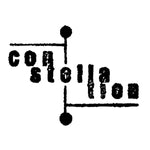Khôra
Khôra is an experimental music project of Toronto resident Matthew Ramolo aimed at blurring the lines that separate the organic and synthetic, improvisation and composition. The emphasis in Khôra’s music is distributed between interlocking melodies (nested arpeggios, broken fugal voices, etc.) performed on acoustic and electronic instruments and experimentation involving field recordings and analogue/digital processing. From moving sparseness to fervent density, the music summons the spirit of eastern modes, contemporary classical, avant and sacred minimalism, experimental rock, and various forms of electronic music.
Though recorded in a variety of contexts, all of Khôra’s music is assembled and produced in his meager bedroom studio which, in the spirit of autobiography, he likes to call The Ratio.
In 2006, after a period of dwelling in Montreal, Ramolo self-released a handmade full-length record under a different moniker entitled Now Beacon, Now Sea… on his Rift-as-Passage imprint. Through subsequent years of fatiguing wage slavery, Khôra emerged from a long period of isolation, writing and refinement with the album Silent Your Body Is Endless in 2009.
In autumn 2010, in collaboration with Constellation Records, a re-mixed, re-sequenced, and re-mastered version of Silent Your Body Is Endless was released as part of the label's first edition of their Musique Fragile series.
In live performance, Ramolo is occasionally joined by guest musicians but usually plays solo, building intricate longform pieces using multiple instruments and loop machines. Khôra has played often in Toronto and Montreal and also embarked on a month-long North American tour with labelmate Nick Kuepfer and Time-Lag/Indian Queen Records artist Silent Land Time Machine in June 2011.
Says Matthew about Khôra:
The word khôra appears in the context of one of the West’s oldest cosmogonic myths. It is a word which gracefully evades definition even as it perpetually beckons for it. In colloquial Greek khôra is used to designate space or place (such as territory, country, boundary, town, etc.); in Tibetan Buddhism it can signify the circumambulation of a sacred site; in the origin myth described in Plato’s Timaeus it is only spoken of obliquely in the metaphors of a womb, a matrix, and impressionable wax. Khôra is said to ‘give space’ for existence to transpire but cannot itself be said to dwell in being or non-being and so is referred to as a third genus – that which is fully other. It is this mystical dynamic, this indeterminacy as provocation, this unhinging of a name from the terrain of semantic meaning and restoration as pure sound, this seemingly infinite play within and without the word (homonymically the word suggests something essential, a core, a heart, which only thickens the mire) that I find entrancing and beautifully apt as a structural analogue for the artist, their practice and predicament: a constant struggle through and with identity in the context of questions of freedom, force, the limits of the body and its relation to the world, and the resources and language of expression.



